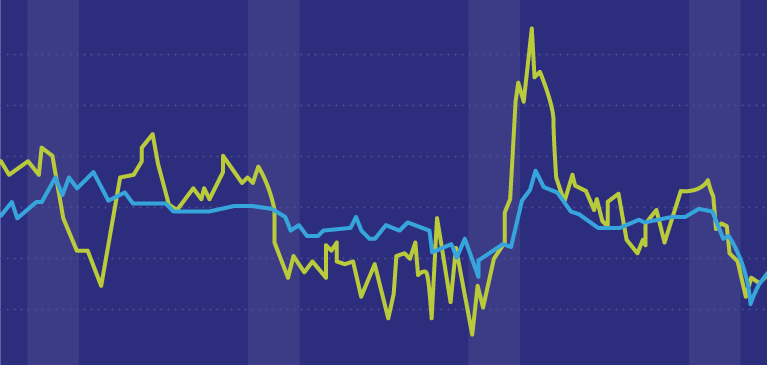by David Ragan, Mawer Investment Management, via The Art of Boring Blog
Risk and uncertainty—what’s the difference? And does it matter? Yes and no, I would say. The generally accepted difference between risk and uncertainty is the ability to accurately measure the odds of a potential outcome happening. For theory hounds, (and in the parlance of economist Frank Knight), risk comprises “known unknowns.” Meaning, we know we can’t predict the future (read: unknowns), but we can account for the likelihood of some scenarios. Risk is like rolling the dice at a craps table. There is a one in-whatever-chance—a given number of outcomes.
Uncertainty, on the other hand, is truly unknown. It’s the “unknown unknown.” Uncertainty is going for a hike in avalanche territory. You can say with confidence that there’s a “high risk” of an avalanche occurring, but there is no “one-in-whatever” odds—or probability— you’ll make it to the other side. You might pass under the mountain’s peak once and be fine. But even in hindsight you can’t say there was a zero percent chance an avalanche was going to happen because it’s also possible the likelihood was a 98% chance and you were just in that lucky 2%.
One could easily argue that almost everything is uncertain: the markets, people, life. So, if we didn’t accept any uncertainty, we couldn’t invest at all. We would be paralyzed. The difference between risk and uncertainty does matter because they are distinct terms—and it’s difficult to account for the latter in investing. But while it is important for investors to understand these terms are not interchangeable (I would argue in a Knightian-esque way), when pricing potential outcomes into valuations, investors must treat risk and uncertainty as generally the same, while knowing they’re different. It’s why our valuation models are expressed in ranges—wide ranges—and then acknowledging these ranges are still incomplete in our team discussions. The models reflect a range of possible—uncertain—outcomes that may affect a stock’s price, but certainly not all.
Let’s look at an example: ALD, a leasing company in our international equity strategy leases vehicles to corporations (i.e., they are relevant to businesses that own a corporate car, have a mobile sales team, etc.). When the leases are due, at the end of about three to four years, ALD must then sell the cars into market. Ultimately, the company makes an assumption on what that car will sell for in the future based on the current economic environment.
But we don’t know what auto prices in Europe will do for the next 12-36 months. And that’s a big risk (uncertainty) because it’s a very leveraged business model: if the prices do lower—and recently there has been a lot of pressure on diesel engines—the company could suffer huge losses. For illustrative purposes, if ALD projects that they’re going to sell their cars for $10,000 and then sells them for $9,000, they will have realized a $1,000 loss on every one of their cars…what is the chance of the company’s survival?
When we accounted for this possibility (and we try to account for as many potential scenarios as possible), we found it could potentially wipe out not only the company’s profits for multiple years, but a lot of their equity.
Despite not knowing what will happen we can look at a company under its current and specific operating parameters. In the case of ALD, there are several elements we can analyze to determine if the current valuation makes sense—e.g., the number of cars they lease; the amount of equity they have; and, the historic price declines in cars from 2007 to 2009.
Dealing with uncertainty by considering it as risk in our models is using the best of the knowledge we have at the time to paint a reasonable scenario for a very bad scenario: whether ALD is solvent afterwards, or completely finished; how much we could become impaired.
From what we determined in this case, the “very bad scenario” was not a pretty picture, but they would remain solvent.
We don’t have nearly enough certainty about what the future is going to be; there is no context for an investment with perfect odds. However, the qualitative side to portfolio management is an important component: adjusting the weight of a holding lower when faced with an asymmetry in risk, and not adjusting again until we see evidence indicating otherwise.
Of course, the major offset to the risk and uncertainty challenge is to buy companies that are boring, resilient, and reliable, so you can manage the uncertainty perhaps a bit easier.
This post was originally published at Mawer Investment Management














